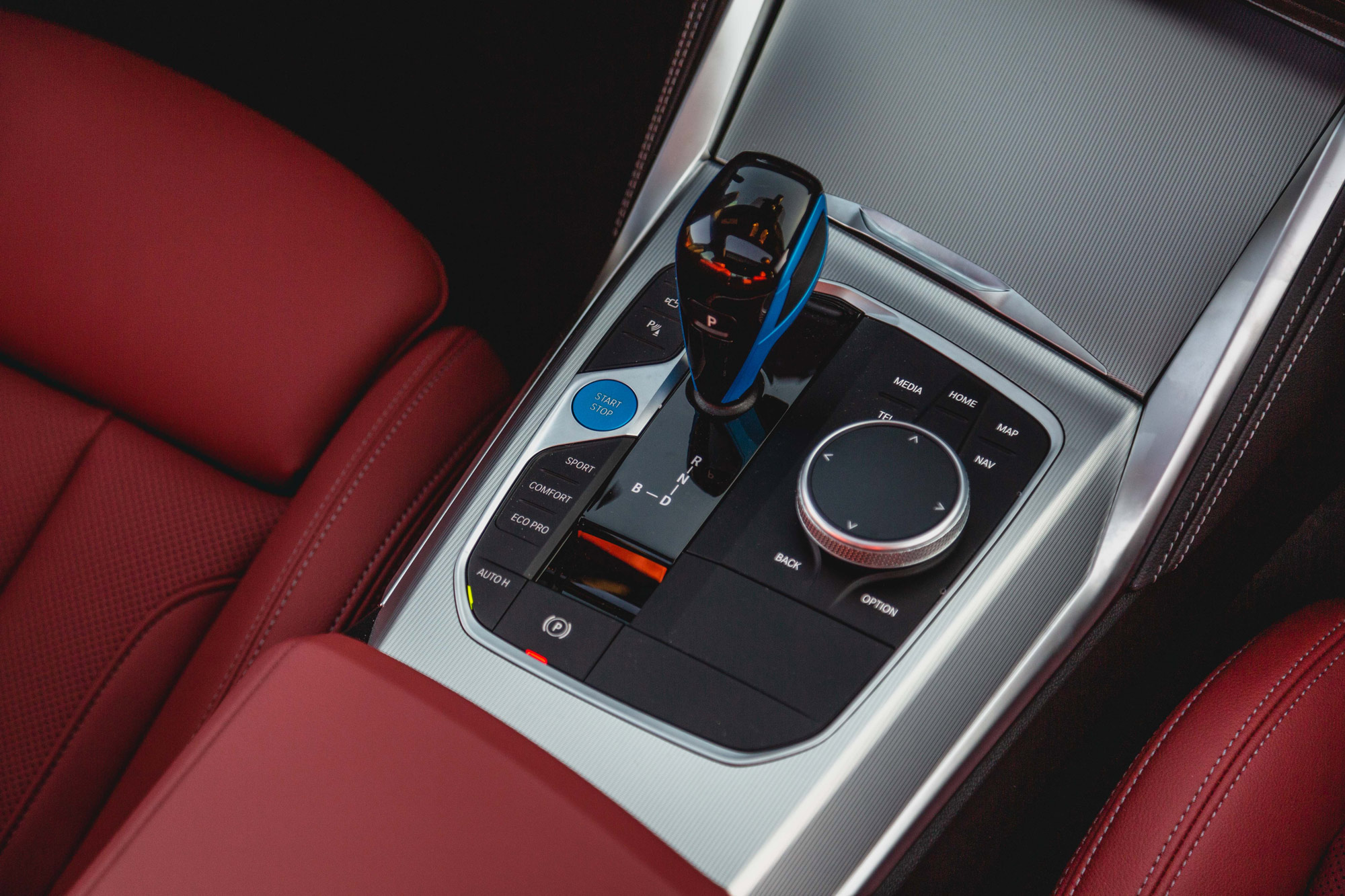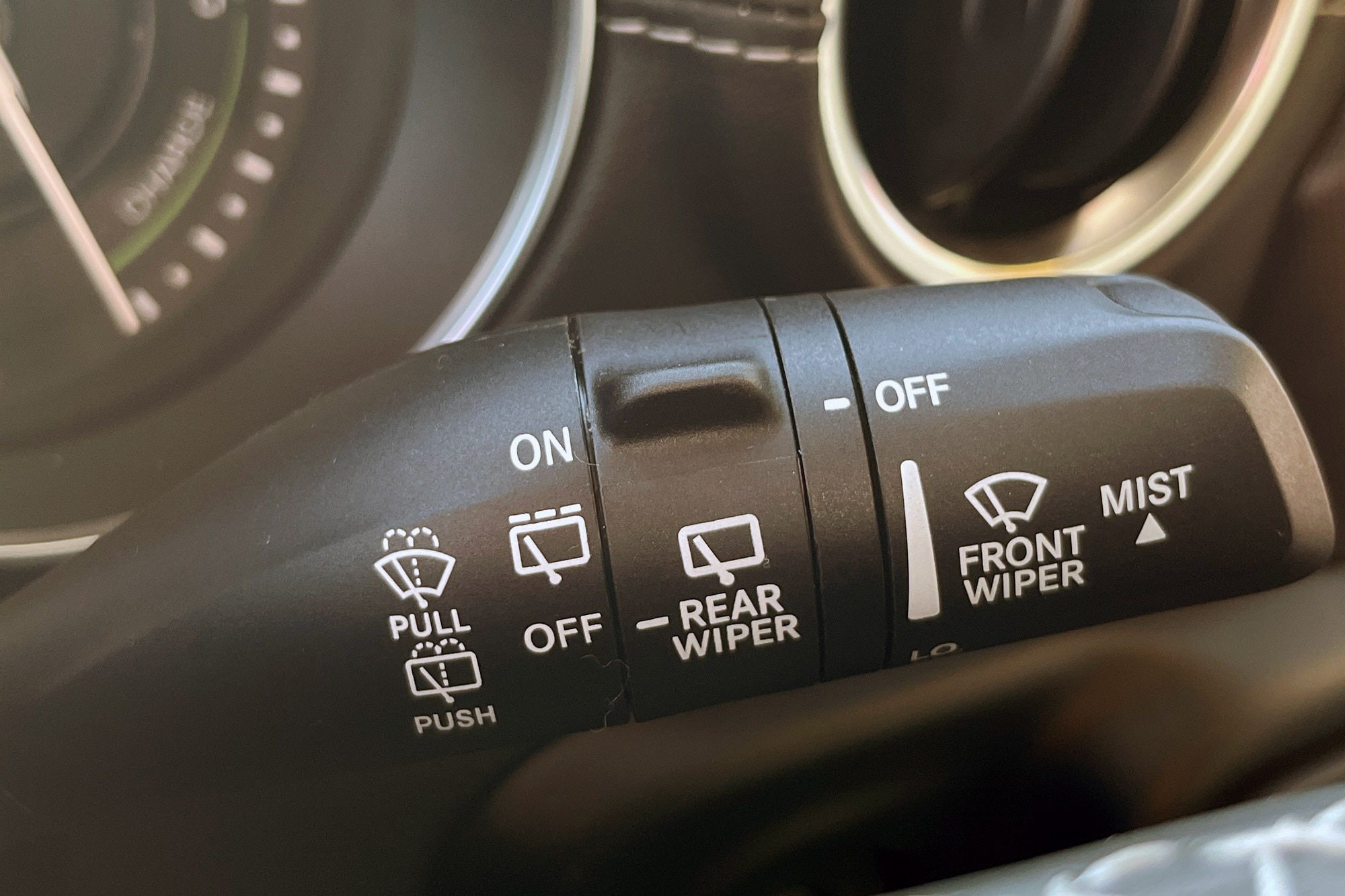What Does This Button Do in My Car?
Unsure about the icons in your car? Here's what they mean and do.
 Manuel Carrillo III | Capital One
Manuel Carrillo III | Capital One
While automotive cockpits increasingly rely on touchscreens to handle vehicle controls, many manufacturers still include hard buttons for some essential features and safety features.
If you've ever been puzzled over the meaning of an unfamiliar icon on your dashboard, door, or console, this guide is here to help you decode the symbols and understand their purpose.

Belema Iyo | Capital One
Traction and Stability Control
Two squiggly lines trailing behind a car indicate what could happen if you turn off a vehicle’s traction- or stability-control system, which limits how much the wheels can spin in slippery conditions. Deactivating traction control can be helpful when you're stuck in mud or snow because it allows you to spin your tires as needed, but it's best to keep this system on during normal driving.
Defroster
A rectangular or fan-shaped outline with curvy arrows superimposed marks the defrost button. Use this to activate the vehicle's defrosting system to clear fog or frost from the windshield. Rear defrost often uses heated wires in the glass, while front defrost relies on jets of hot air.
Windshield Wiper Heater
If you've seen that same fan-shaped outline but with squiggly lines and a wiper on top, then you're looking at a windshield wiper heater button, which typically activates a heated zone at the base of the windshield to free wipers from accumulated snow and ice.
Parking Sensor
A "P" with curved lines radiating from it indicates the parking sensor button. This allows you to turn off the system that monitors how close you're getting to objects near your vehicle while parking. You might want to turn this off when hitching up a trailer.
Distance Control
The distance-control button typically resembles either two car icons separated by an arrow or a set of three horizontal lines trailing behind a car. This button allows you to set the length of the gap between you and the traffic ahead of you while using adaptive cruise control.
Lane-Departure Warning
A pair of parallel lines fencing in a diagonal vehicle icon is the general template for the lane-departure-warning button. This system tracks the position of your vehicle in relation to the lines on the side of the road and alerts you when you cross over those lines. Turning the feature off can be helpful when contending with roads where lane markings are obscured or broken or where twisty curves frequently take you close to the lines.
 Belema Iyo | Capital One
Belema Iyo | Capital One
Fog Lights
The switch that operates a vehicle's fog lights is marked with an icon that resembles a headlight next to a squiggly line crossed by several diagonal lines. These low-positioned lights improve visibility in foggy conditions and can help reduce glare during night driving, but there's no need to use them in regular weather conditions.
Window Lock
The outline of a window with an X on it denotes the button that limits who can operate a vehicle's windows. Almost always found on the driver's side of a car, this button is especially helpful for preventing young passengers from opening the rear windows.
Child Safety Locks
Similar to window locks, a vehicle's child safety locks prevent rear-seat passengers from opening the doors from the inside. This is great for keeping curious kids safe while on the road. This button is sometimes combined with the window lock, but in other instances it takes the form of a switch in the door jamb. Either option is typically paired with a child icon.
 Manuel Carrillo III | Capital One
Manuel Carrillo III | Capital One
Air Recirculation
That small automobile silhouette with a sideways U-shaped arrow inside it activates a vehicle's air-recirculation feature, which closes the exterior vents and uses fans to circulate the air that's already in the cabin. This is helpful when you want to cool the inside of a car quickly on a hot day or when you want to keep dusty or polluted air from entering the cabin.
Hazard Lights
A pair of concentric triangles — either red or white on a red background — mark the button that activates a vehicle's hazard lights. Press this button to flash the front and rear directional lights to make your vehicle more visible in an emergency, such as when you're stopped on the shoulder of a highway.
Homelink
Homelink is a system that connects vehicles to automatic garage door openers. Homelink buttons, which usually are numbered or identified by a series of dots accompanying an outline of a house surrounding an upward arrow, often come in a trio. Each can be programmed to open and close a corresponding garage door.
 Belema Iyo | Capital One
Belema Iyo | Capital One
Windshield Washer
That familiar fan-shaped outline is back again, only this time with a wiper and a spray of fluid squirting over it. The windshield washer icon is usually found on a steering-column stalk that you'll pull to clean the windshield or a button attached to the end of that same stalk.
Auto Stop/Start
An "A" with a semicircular arrow around it controls a vehicle's automatic engine start/stop system. Designed to prevent idling and reduce fuel consumption and emissions, the system turns the engine off when the vehicle is stationary and back on when it's time to move again. This button allows you to disable that system, which you might want to do if you find the on/off cycle too disruptive.
Auto Brake Hold
An "A" in a full circle inside a pair of brackets, on the other hand, controls the automatic brake hold. You may also see the word hold associated with the button. This system keeps the brakes activated after you lift your foot off the pedal and disengages them once you hit the gas again. This can be useful when slogging through stop-and-go traffic.
Electronic Parking Brake
Swap in a "P" for the "A" and you're now looking at the electronic parking-brake switch. This button, which might require a push or a pull to activate, controls the parking brake, which holds the car in place on steep inclines or when the transmission is in neutral.
Hill-Descent Control
A truck, SUV, or crossover icon angled downward with a small speedometer above it usually marks the button used to engage a vehicle's hill-descent-control system. This automatically limits your speed when traveling down a steep grade, giving you better control in difficult driving conditions.
Written by humans.
Edited by humans.
 Benjamin Hunting
Benjamin HuntingBenjamin Hunting is a writer and podcast host who contributes to a number of newspapers, automotive magazines, and online publications. More than a decade into his career, he enjoys keeping the shiny side up during track days and always has one too many classic vehicle projects partially disassembled in his garage at any given time. Remember, if it's not leaking, it's probably empty.
Related articles
View more related articles